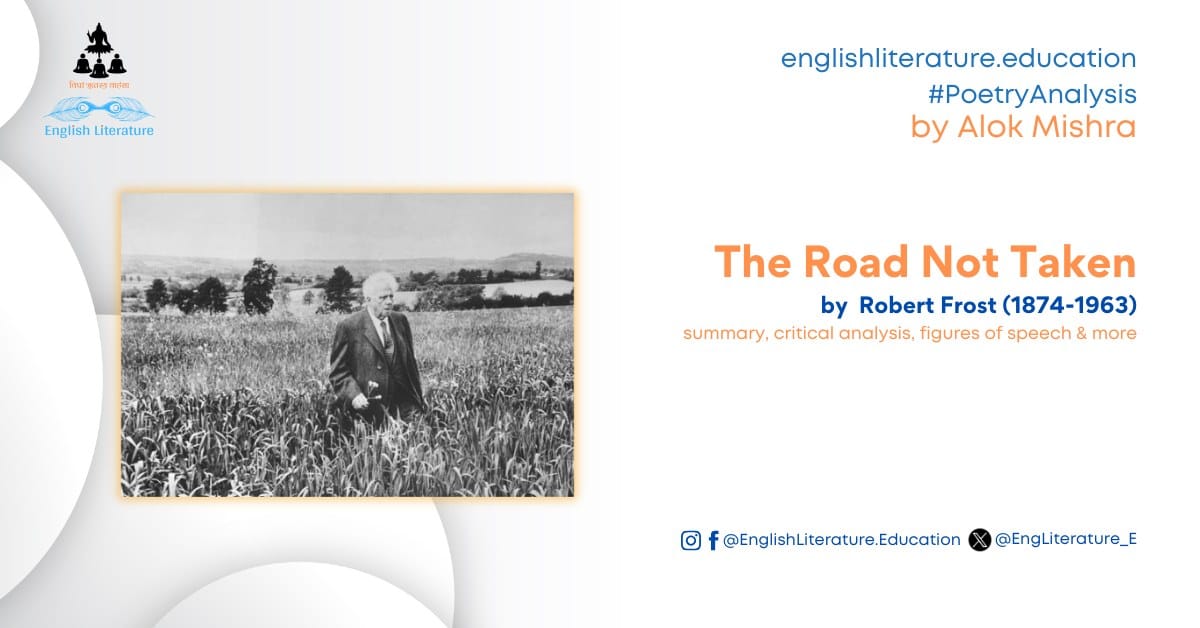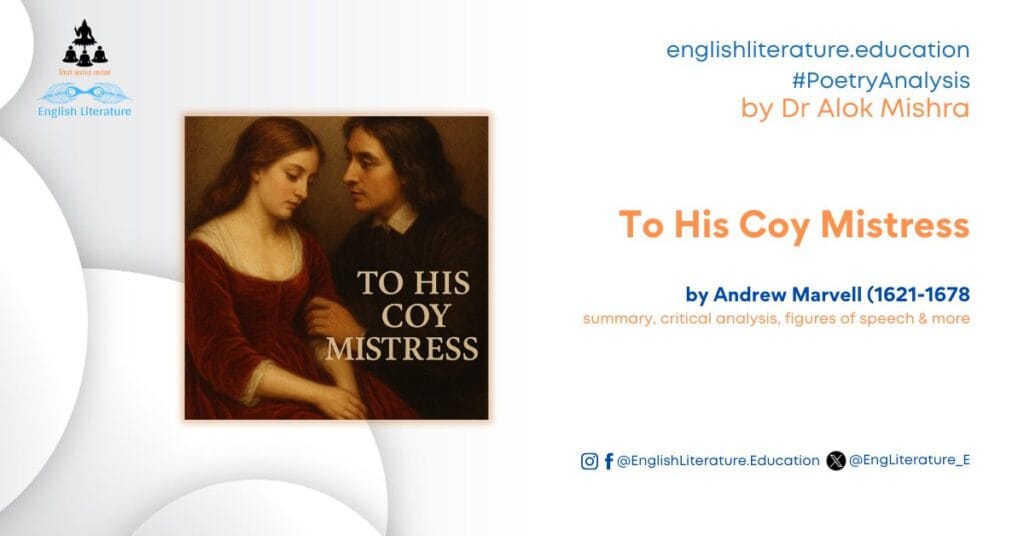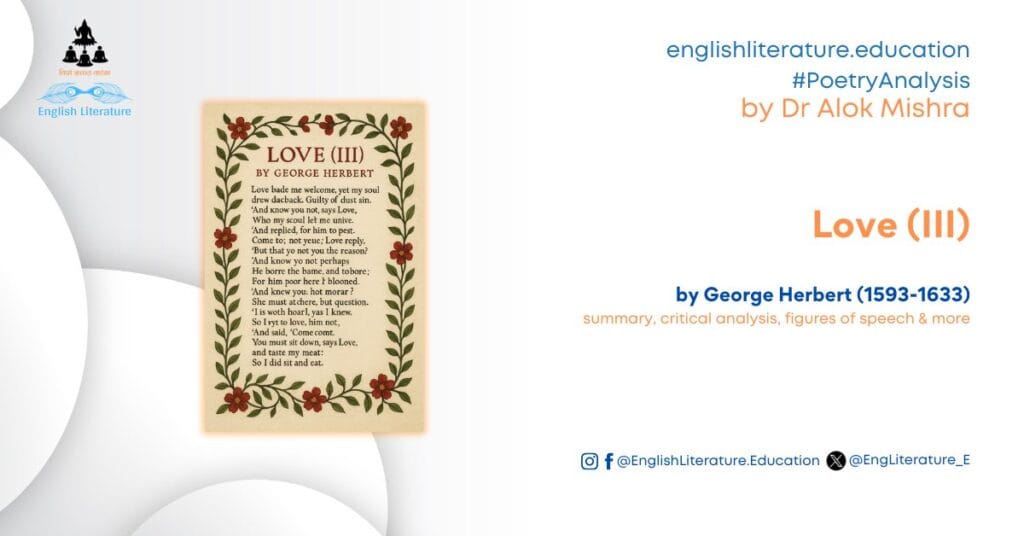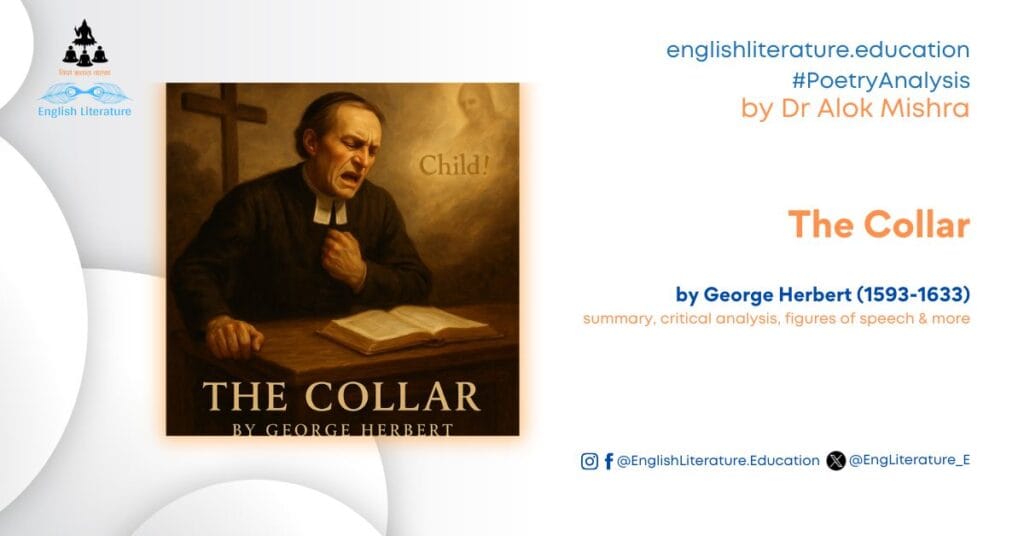Robert Frost remains one of the most celebrated voices of twentieth-century American poetry, admired for his ability to present profound philosophical ideas through the simplicity of rural imagery. Born in 1874, Frost composed poems that speak simultaneously to the ordinary reader and to the critic, weaving depth into everyday scenes. “The Road Not Taken” is one of his most famous and widely anthologised works. Frequently taught in schools and universities, the poem continues to generate discussion on choice, freedom, regret, and the inexhaustible complexity of human decision-making.
In this article, you will find a comprehensive critical appreciation of the poem. It begins with a straightforward summary, followed by a detailed analysis of its central ideas, use of imagery, and figures of speech. The article concludes with an evaluation of the poem’s philosophical significance and its enduring place in modern literature.
Robert Frost’s The Road Not Taken: A Reflection on Choice, Memory, and Human Destiny
Robert Frost’s The Road Not Taken, first published in 1916 in his collection Mountain Interval, is one of the most celebrated and debated poems of modern American literature. At once simple in imagery yet profound in implication, the poem stages a traveller’s moment of decision at a fork in the woods, transforming it into a timeless metaphor for human choice. Through its measured stanzas, vivid natural imagery, and subtle irony, Frost meditates on the complexity of decision-making, the permanence of paths chosen, and the narratives we later construct about our past.
This poem reflects Frost’s unique ability to present philosophical questions through everyday experience. The “two roads” of the opening stanza symbolise the inevitability of choice, while the speaker’s attempt to weigh their differences mirrors the uncertainty of human judgement. Yet, the revelation that both roads were “really about the same” destabilises the notion of a genuinely radical choice. The reflective tone of the closing stanza, marked by the ambiguous “sigh,” suggests that memory and imagination colour our understanding of past decisions more than the decisions themselves.
Thematically, the poem resonates with the modernist preoccupation with individual agency and existential freedom. It resists didacticism, instead presenting choice as both unavoidable and ultimately mysterious in its consequences. Structurally, its four stanzas of five lines each, written in a regular ABAAB rhyme scheme, provide a sense of order and balance to the uncertainty it portrays.
For students of English literature, “The Road Not Taken” offers an essential study in the interplay between simplicity and depth. It exemplifies Frost’s mastery of metaphor and irony, while also illustrating the modern human condition: the necessity to choose, the impossibility of return, and the enduring desire to find meaning in the paths we take.
Publication and Background
Composed: 1915 (while living in England, inspired by Frost’s walks with fellow poet Edward Thomas)
Published: 1916 (Mountain Interval, Frost’s first collection to appear in America)
Form: Four quintains (4 stanzas of 5 lines each), regular ABAAB rhyme scheme, predominantly iambic tetrameter
Theme: Choice, uncertainty, memory, and the human tendency to assign meaning to past decisions
Frost wrote “The Road Not Taken” during his stay in England, drawing inspiration from his frequent walks in the countryside with Edward Thomas. Thomas often regretted their chosen routes, imagining that the alternative would have been more interesting. Frost transformed this habitual indecision into a meditation on life’s choices, layering irony beneath the seemingly simple metaphor of diverging paths.
First published in 1916 in Mountain Interval, the poem quickly became one of Frost’s most famous works. Its deceptive simplicity led to widespread misinterpretation, with many readers taking it as a straightforward endorsement of individualism. In reality, the poem highlights the ambiguity of human choice and the way memory reshapes our understanding of the past. The phrase “the one less traveled by” has entered cultural consciousness, often divorced from the poem’s subtler irony.
While rooted in a personal anecdote, The Road Not Taken transcends its origin to become a universal reflection on the nature of decision-making, the irreversibility of life’s choices, and the enduring human impulse to find meaning in the paths we follow.
Quick Summary of The Road Not Taken
Robert Frost’s The Road Not Taken is a deceptively simple yet philosophically charged poem that reflects on the inevitability of choice and the way human beings interpret their past decisions. The poem opens with the speaker arriving at a fork in a “yellow wood,” confronted with two diverging paths. Both roads appear equally worn, despite the speaker’s initial attempt to distinguish one as “less traveled.” This moment of hesitation mirrors the universal human condition of decision-making, where clarity is elusive and the consequences of choice remain unknowable. The first stanza thus establishes the central metaphor: life as a journey defined by choices that cannot be undone.
The middle stanzas capture the speaker’s scrutiny and rationalisation. He chooses one path while admitting that the difference is slight, yet consoles himself by promising to return and explore the other, an acknowledgement he quickly recognises as unrealistic, since “way leads on to way.” This awareness reflects the permanence of choices and the impossibility of reliving alternatives. The closing stanza then shifts the focus to memory and narration. The speaker imagines himself “telling this with a sigh / Somewhere ages and ages hence,” projecting into the future a retrospective meaning that the moment itself did not contain. The final claim—“I took the one less traveled by, / And that has made all the difference”—rings with deliberate ambiguity. It can be read as self-consolation, irony, or a genuine assertion of individuality, but its power lies in its refusal to settle into a single interpretation.
The poem, therefore, moves from a concrete woodland scene to a profound meditation on choice, consequence, and human self-deception. It exposes how people shape narratives about their past, often imbuing decisions with significance that was absent at the time. Like many of Frost’s works, “The Road Not Taken” juxtaposes rural imagery with psychological depth, transforming an ordinary walk into a timeless allegory of life’s crossroads and the stories we tell ourselves to navigate them.
Text of the poem The Road Not Taken
Line-by-line Explanation and Critical Commentary on the poem The Road Not Taken by Frost
Lines 1–5
“Two roads diverged in a yellow wood,
And sorry I could not travel both
And be one traveler, long I stood
And looked down one as far as I could
To where it bent in the undergrowth;”
Explanation:
The poem begins with a simple yet symbolically rich image: two diverging paths in a “yellow wood,” likely autumn, a season associated with change and transition. The speaker confronts the impossibility of pursuing both options and laments the limitations of being “one traveler.” The act of “long I stood” conveys hesitation and careful contemplation. His attempt to “look down one as far as I could” reveals a desire for foresight, yet the road ultimately bends “in the undergrowth,” symbolising the uncertainty and obscurity of the future.
Critical Commentary:
Frost establishes the central metaphor of choice through the natural image of diverging roads. The regret of not being able to “travel both” reflects the fundamental human condition of having to make exclusivity-based decisions. The autumnal “yellow wood” adds a tone of melancholy, suggesting maturity and the passage of time. The bend in the path highlights the limits of human vision: while one may attempt to foresee outcomes, the future always remains concealed. The stanza captures a universal dilemma: the longing to pursue multiple possibilities, yet being constrained by time, identity, and circumstance.
Poetic Devices:
Metaphor: The roads symbolise life’s choices.
Imagery: “Yellow wood” evokes both natural beauty and seasonal transition.
Tone: Reflective, tinged with regret.
Enjambment: The lines flow naturally, mirroring the continuity of thought and the hesitation that accompanies it.
Comparison with Other Poets:
Frost’s meditative hesitation recalls Matthew Arnold’s “Dover Beach,” where uncertainty and human limitation pervade the reflection on existence. Unlike Tennyson’s Ulysses, which asserts a bold embrace of experience, Frost’s opening leans towards hesitation and recognition of constraint. In this respect, the tone also parallels Thomas Hardy’s meditations, where choice and fate are often inseparable from melancholy resignation.
Lines 6–10
“Then took the other, as just as fair,
And having perhaps the better claim,
Because it was grassy and wanted wear;
Though as for that the passing there
Had worn them really about the same,”
Explanation:
The speaker decides upon the second road, judging it “just as fair” as the first. At first glance, he attributes to it a “better claim” because it appears grassy and less worn, a choice that suggests independence and originality. However, this reasoning quickly falters: he admits that both paths had in fact been worn “really about the same.” The stanza thus highlights the fluidity of perception, how people shape narratives to justify their decisions, even when evidence shows little real difference.
Critical Commentary:
Frost here underscores the ambiguity of choice. The attempt to see one road as less travelled reflects the human need to attach meaning to decisions, even in cases where the options are essentially indistinguishable. The stanza also introduces irony: while the speaker momentarily convinces himself of a “better claim,” he undercuts his own argument almost immediately. This ironic self-awareness complicates the popular interpretation of the poem as a straightforward endorsement of individualism. Instead, Frost points to the way choices acquire imagined significance through human rationalisation.
Poetic Devices:
Irony: The claim of one road being less travelled is contradicted by the admission that both are “really about the same.”
Imagery: “Grassy” and “wanted wear” evoke a sense of freshness and possibility.
Repetition and Qualification: Words like “perhaps” and “though” reflect hesitation and second-guessing.
Symbolism: The roads embody the deceptiveness of choices, which often appear different but are essentially alike.
Comparison with Other Poets:
This reflective tension echoes Coleridge’s “The Rime of the Ancient Mariner,” where the act of choice and its justification carry moral and existential weight. It also echoes Browning’s The Last Ride Together, where rationalisation transforms disappointment into a consoling narrative. Unlike the assertive declarations in Whitman’s Song of the Open Road, Frost’s speaker undercuts his own confidence, showing choice as a fragile, interpretive act rather than a triumphant assertion of individuality.
Lines 11–15
“And both that morning equally lay
In leaves no step had trodden black.
Oh, I kept the first for another day!
Yet knowing how way leads on to way,
I doubted if I should ever come back.”
Explanation:
The speaker observes that both paths, on that particular morning, were equally fresh, their leaves untrodden and unblackened by footprints. This admission underlines the lack of any real difference between the two options. Despite this, the speaker resolves to save the first path for “another day,” a gesture of self-consolation. Immediately, however, he recognises the futility of this hope: life’s journeys rarely permit a return, since “way leads on to way.” Each choice sets off a chain of circumstances that makes retracing impossible, underscoring the irrevocable nature of human decisions.
Critical Commentary:
This stanza embodies the poem’s existential core: the illusion of limitless possibility versus the reality of irretrievable choice. The image of untrodden leaves amplifies the sense of freshness and potential, yet the recognition that one cannot “ever come back” tempers this with the inevitability of time. The interplay of hope (“I kept the first for another day”) and resignation (“I doubted if I should ever come back”) mirrors the psychological process of decision-making: humans comfort themselves with imagined alternatives even as they sense the impossibility of revisiting them. Frost thereby deepens the irony introduced earlier, portraying choice as both empowering and limiting.
Poetic Devices:
Imagery: The “leaves no step had trodden black” vividly conveys freshness and possibility.
Irony: The promise to return is immediately undercut by the acknowledgement that it is impossible.
Repetition: The phrase “way leads on to way” reinforces the unending, irreversible chain of choices.
Tone: A mix of wistful hope and resigned awareness.
Comparison with Other Poets:
The sense of irreversibility evokes Thomas Hardy’s fatalistic vision, particularly in “The Darkling Thrush,” where human effort meets the limits of fate. Unlike Wordsworth’s The Prelude, which celebrates the open-ended potential of life’s journey, Frost offers a sobering acknowledgement of constraint. The tension also aligns with Edward Fitzgerald’s Rubáiyát of Omar Khayyám, where the unalterable passage of time renders the possibility of revisiting past choices impossible.
Lines 16–20
“I shall be telling this with a sigh
Somewhere ages and ages hence:
Two roads diverged in a wood, and I—
I took the one less traveled by,
And that has made all the difference.”
Explanation:
The speaker projects into the future, imagining himself recounting his decision “with a sigh,” a word that carries ambiguity: it may signal regret, nostalgia, satisfaction, or resignation. He frames his choice as one of individuality, taking “the one less traveled by.” Yet this conflicts with earlier admissions that both paths were “really about the same.” The closing claim “And that has made all the difference” is thus deliberately enigmatic. The difference may lie not in the objective nature of the choice but in the narrative the speaker constructs around it. The stanza suggests that meaning is not inherent in choices but created retrospectively, through the stories we tell ourselves.
Critical Commentary:
The ending crystallises Frost’s irony. While popularly read as a celebration of non-conformity, the poem complicates that interpretation: the speaker earlier acknowledged that neither road was truly less travelled. The “sigh” and the retrospective stance foreground the human tendency to mythologise personal decisions, imbuing them with symbolic weight. The final line resists closure, for “all the difference” may signify profound consequence or mere self-justification. Frost’s genius lies in capturing this paradox: choices matter deeply, yet their meaning often arises only in hindsight, coloured by memory and self-narration.
Poetic Devices:
Ambiguity: The “sigh” invites multiple readings—relief, regret, irony.
Repetition: “Two roads diverged in a wood” echoes the opening, creating structural symmetry.
Enjambment and Pause: The dash after “I—” reflects hesitation, dramatising the weight of the choice.
Paradox: The difference is both real and constructed, objective and subjective.
Comparison with Other Poets:
This retrospective construction of meaning recalls Matthew Arnold’s “Self-Dependence,” where the speaker realises that meaning must be found in personal interpretation rather than external guidance. It also parallels T. S. Eliot’s The Love Song of J. Alfred Prufrock, where the speaker endlessly rationalises choices and their implications. Unlike Whitman’s celebratory individualism in Song of Myself, Frost’s conclusion underlines the complexity of human decision-making, resisting any simple moral.
Final Notes on Poetic Prowess
Frost’s The Road Not Taken encapsulates the complexity of human decision-making in a deceptively simple narrative. Its four quintains employ conversational diction, natural imagery, and subtle irony to stage a meditation on choice, consequence, and memory. The symmetrical structure mirrors the process of contemplation and resolution, while the repeated phrase “Two roads diverged in a wood” frames the poem as both cyclical and inevitable. What makes the poem enduringly influential is its balance of accessibility and ambiguity: readers may approach it as a celebration of individuality, yet the irony of “really about the same” complicates such an interpretation. Frost’s genius lies in his ability to preserve this tension, between freedom and inevitability, between self-determination and the stories we tell ourselves, in a form at once lyrical and conversational.
Some Literary Conjecture and Notes
Philosophical Continuity: From The Road Not Taken to Frost’s Later Poems
“The Road Not Taken” anticipates themes that Frost would continue to explore throughout his career, particularly the tension between human agency and the inevitability of fate. In Stopping by Woods on a Snowy Evening, the speaker pauses before a choice—whether to stay and revel in beauty or to press on with “promises to keep.” Similarly, in “The Road Not Taken,” the speaker lingers before diverging paths, burdened by the impossibility of choosing between them. Both poems reveal Frost’s preoccupation with the irrevocability of decisions and the psychological weight of obligation. The “sigh” in The Road Not Taken resonates with the quiet resignation of “And miles to go before I sleep,” linking Frost’s meditations on choice with his reflections on mortality and responsibility. Just as Milton used the sonnet form to anticipate the cosmic struggles of Paradise Lost, Frost’s lyric here foreshadows his lifelong engagement with the paradox of freedom within limitation.
Comparative Perspective: Frost and Dante on Life’s Choices
While Frost situates his traveler at a fork in a “yellow wood,” Dante opens his Inferno with a pilgrim “midway in our life’s journey” lost in a “dark wood.” Both settings mark a moment of crisis and decision, though their resolutions diverge. Dante’s wood leads to a divinely orchestrated journey toward salvation, guided by reason and faith. In contrast, Frost’s wood contains only two indistinguishable paths, the significance of which is constructed retrospectively by the speaker. Where Dante finds providential meaning, Frost highlights the absence of such guarantees, underscoring the modern individual’s need to narrativise choice in a world without absolute direction. Yet both poets emphasise that choices define identity: Dante through moral allegory, Frost through psychological introspection. In this sense, Frost secularises the medieval allegory of life’s journey, transforming it into an existential reflection on individuality and meaning-making.
Key Takeaway for Students
The Road Not Taken is more than a pastoral lyric; it is a meditation on the nature of human choice and the narratives we construct to validate our paths. Placed alongside Frost’s later poems, it reveals his sustained concern with responsibility, limitation, and the irreversibility of life’s journey. Compared with Dante’s allegorical wood, Frost’s poem strips away divine scaffolding, leaving individuals to create their own significance. For students, the poem teaches that choices gain meaning less from objective difference and more from how we interpret them in hindsight. Its enduring relevance lies in this paradox: that while choices may be arbitrary, the stories we tell about them shape our lives and identities. Frost’s poetic brilliance lies in capturing this truth with clarity, irony, and deceptive simplicity.
Comprehensive Critical Commentary on Frost’s The Road Not Taken
Robert Frost’s “The Road Not Taken” is one of the most anthologised and frequently misinterpreted poems in modern American literature, a work that fuses lyrical simplicity with philosophical ambiguity. At its surface, the poem presents a speaker confronted with two diverging paths in a yellow wood, an archetypal metaphor for the choices one faces. Yet beneath this pastoral imagery lies a profound meditation on freedom, consequence, and the narrative frameworks through which humans interpret their lives. Composed in 1915 and published in Mountain Interval (1916), the poem reflects Frost’s preoccupation with individual agency in a world stripped of apparent metaphysical certainties. Unlike Milton’s explicitly theological sonnet, Frost’s lyric resists doctrinal resolution, embodying the modernist condition of existential choice where meaning is not divinely ordained but retrospectively constructed by human consciousness.
The opening stanzas foreground the arbitrariness of decision-making. The speaker admits that both paths are “really about the same,” their leaves “no step had trodden black,” thereby dismantling the myth that one path was objectively “less travelled.” Yet the final stanza projects into the future, where the speaker imagines recounting the choice “with a sigh,” claiming it “has made all the difference.” This tension between present recognition (that the paths were indistinguishable) and future recollection (that one path defined a life) is the core irony of the poem. Frost suggests that humans confer significance upon choices retrospectively, mythologising them as decisive turning points. Thus, the poem is less a hymn to rugged individualism than a meditation on the psychology of decision-making, where memory, narrative, and self-justification shape the meaning of our past.
Critically, The Road Not Taken also engages with broader philosophical traditions. It echoes William James’s pragmatism, which emphasises the consequences of belief and choice in shaping human experience. Frost’s traveller is neither guided by divine providence nor paralysed by nihilism but compelled to choose, recognising that “way leads on to way” and that no path may be retraced. In this respect, the poem resonates with existentialist thought, particularly Sartre’s insistence that human beings are condemned to freedom and must create meaning through their own choices. Frost’s genius lies in couching these weighty ideas within a deceptively simple pastoral frame, using colloquial diction and natural imagery to render existential anxiety both immediate and universal.
Structurally, the poem employs four quintains with a consistent ABAAB rhyme scheme, lending musical regularity to the thematic uncertainty it conveys. The repeated refrain, “Two roads diverged in a wood”, creates cyclical symmetry, reinforcing the inevitability of life’s crossroads. The dash after “I—” in the final stanza enacts hesitation in form, dramatising the burden of decision. Unlike Milton’s Petrarchan sonnet, which moves from doubt to theological resolution, Frost’s lyric resists closure. Its final claim, “And that has made all the difference,” remains suspended between sincerity and irony, refusing the reader a singular interpretation. This indeterminacy is precisely what grants the poem its enduring richness.
In cultural reception, the poem has often been misinterpreted as a celebration of non-conformity, a quintessentially American assertion of self-reliance akin to that of Emerson or Thoreau. Yet Frost’s careful irony undermines such readings. By admitting the sameness of the paths and framing difference as a retrospective construct, the poem critiques the very myth of individual heroism it is often invoked to support. It exposes the stories we tell ourselves about our choices as necessary illusions, affirmations of significance in a world where meaning is not given but made.
Ultimately, The Road Not Taken exemplifies Frost’s poetic ethos: to present the familiar rural landscape as a stage for profound philosophical inquiry. Where Milton’s “On His Blindness” reconciles human suffering with divine providence, Frost’s poem portrays human freedom as simultaneously liberating and burdensome, without resorting to transcendence. Its enduring power lies in its ability to capture the paradox of choice: while each decision may be arbitrary, the narratives we weave around them “make all the difference.” Thus, Frost transforms a simple walk in the woods into a timeless meditation on agency, memory, and the human need to shape life through story.
Thank you for reading this article! You can share your thoughts, doubts, and questions in the comments section. I will try to get back to as many as I can.
All the best!
Dr Alok Mishra
..
.. .. ..





2 Comments. Leave new
A detailed explanation and background of the poem have touched almost every aspects of the poem. A marvellous approach of decoding the poem in lucid manner that made it easier for students of schools and colleges. Undoubtedly they will be benefited from this invaluable contribution.
Sir, your encouraging statement gives me the impetus to carry on!